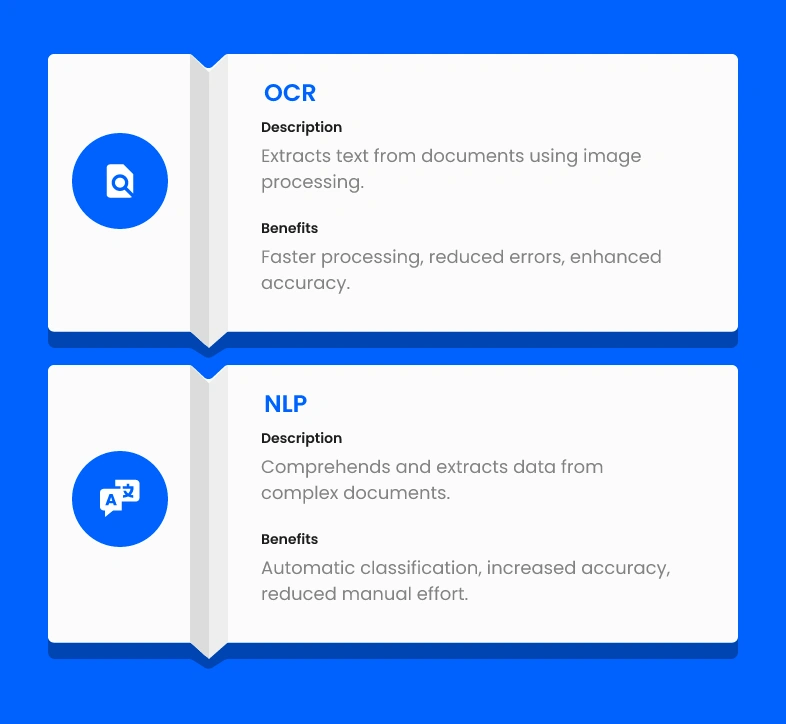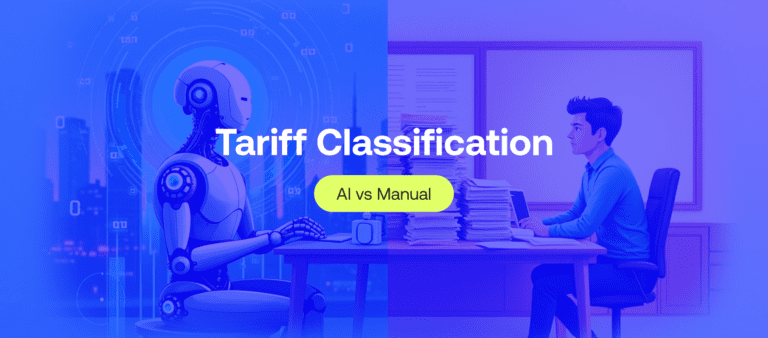Fast & Accurate ENS GB & EU ICS2 Solutions Built for You.
Top Data Extraction Techniques for Faster Customs Clearance by iCustoms
-
Freya Jane
- Director of Customer's Success
For global trade businesses, the customs clearance procedure can be a tangle of laws and documentation requirements. Each freight requires meticulous attention to detail, as numerous documents must be checked and processed to guarantee compliance with customs requirements. Due to this complexity, efficient data extraction techniques emerge as a critical component for smooth and speedy clearance.
Businesses may expedite the extraction process by employing innovative technology, which saves time and effort compared to human data entry. This not only speeds up customs clearance but also reduces the possibility of mistakes connected with human input.
iCustoms is a market leader in delivering tailored offerings to optimise the customs clearance procedure. iCustoms’ knowledge and new technology help businesses manage the complexities of customs documentation with ease.
According to a study, “30% of the businesses that use AI-driven software for data extraction of other purposes say they reduced operating cost, and 47% said they could optimise marketing and sales.”
In this blog, we will look at top data extraction tools and techniques provided by iCustoms and how they improve productivity and precision in customs clearance.
Top Data Extraction Techniques for Quick Customs Clearance

The intelligent document processing software of iCustoms employs the following techniques for data extraction:
1. Optical Character Recognition Technology
OCR is a powerful technique for automatically extracting text from physical documents.
How Does OCR Work?
OCR technology works in the following steps:
1. Image Acquisition: The first step is to capture an image of the document via a scanner or camera. This picture may be in JPEG, PNG, or TIFF formats, among others.
2. Preprocessing: The acquired picture is preprocessed to improve its quality and make it ready for word recognition. This might entail:
- Deskewing: Adjust any tilting or skewing that may be seen in the picture.
- Despeckling: Eliminating artefacts such as dust particles and noise that may impede the identification of characters.
- Binarisation: Changing a grayscale image to a binary image with black and white pixels so that the background and text can be easily distinguished from one another.
3. Character Recognition: This involves using algorithms to analyse the previously processed image and identify individual characters. There are several ways to accomplish this:
- Template Matching: This method locates the closest match between each character’s picture and one of the pre-defined templates.
- Feature Extraction: The process of identifying particular characteristics such as lines, curves, and loops inside characters and then applying statistical models to recognise them.
4. Post-Processing: The software identifies individual characters and then carries out the post-processing of different documents, such as invoice processing.
- Spell Checking: It involves locating and fixing any possible typos or mistakes in the extracted text.
- Layout Analysis: Analysing the text structure and layout in order to organise retrieved characters into meaningful words, phrases, and paragraphs.
Benefits of OCR
There are several advantages of employing OCR for customs clearance:
- Faster Processing: When compared to human data entry, automating data extraction greatly shortens processing times.
- Decreased Errors: Removing the need for manual data entry reduces the possibility of human error and guarantees that customs officials get accurate information.
- Enhanced Accuracy: OCR technology ensures the integrity of the extracted data by offering high accuracy rates.
Experience Precise VAT and Customs Duty Calculation Now!
2. Natural Language Processing Technology:
Natural Language Processing is a subfield of machine learning and AI that allows computers to comprehend and process human language. NLP is used to extract important information from complicated documents, such as business invoices, in the context of customs clearance.
How does NLP work?
It involves the following steps:
1. Comprehending Context: Natural Language Processing algorithms examine textual content in a document to identify its meaning and pinpoint relevant information.
2. Key Data Extraction: Natural Language Processing may extract certain data points based on the context, such as:
-
- Product descriptions
- Quantities
- HS codes
3. Automatic Classification: To further streamline the customs clearance procedure, NLP may even automatically categorise documents based on their content.
Benefits of NLP
Among the advantages of employing NLP for customs clearance are:
- Automatic Data Classification: Natural Language Processing automatically classifies documents, removing the need for human sorting and saving time and resources.
- Increased Data Accuracy: When compared to conventional data extraction processes, NLP technology provides a better degree of accuracy.
- Decreased Manual Effort: Natural language processing greatly minimises the requirement for manual intervention by automating the extraction of complicated data.
Machine Learning is essential to Natural Language Processing because it enables computers to learn and get better at understanding and processing language over time. This guarantees the precision and effectiveness of NLP technology in duties related to customs clearance.
Bottom line
Efficient clearing of customs is critical for businesses to maintain the economy and guarantee on-time delivery of products in the global trade market. One of the most important aspects impacting the speed and quality of customs clearance is the capacity to extract critical data from a variety of papers with accuracy and speed. iCustoms, with its revolutionary use of OCR and NLP methods, is at the forefront of tackling this issue.
Using these innovative methodologies, iCustoms enables businesses to simplify their customs operations, resulting in better efficiency, lower costs, and more competitiveness in the global economy.
FAQ's
What is a data extraction strategy?
A data extraction strategy is a method for meticulously gathering useful information from diverse sources while maintaining precision, efficacy, and consistency.
What is the best way to extract data?
The optimum approach to extracting data is determined by criteria such as data type, source, and intended purpose. Common approaches include employing specialised intelligent data extraction softwares.
What are the challenges in data extraction?
Data extraction challenges include dealing with unorganised data formats, guaranteeing data quality and credibility, managing vast amounts of information, handling complicated data linkages, and resolving legal and privacy problems, among others.
How do I automate data extraction?
Data extraction automation entails utilising software or algorithms to collect, process, and arrange data from several sources without manual involvement.
You may also like:
Struggling to Extract, Catagorise & Validate Your Documents?
Capture & Upload Data in Seconds with AI & Machine Learning
Subscribe to our Newsletter
About iCustoms
Struggling to Extract, Catagorise & Validate Your Documents?
Capture & Upload Data in Seconds with AI & Machine Learning

